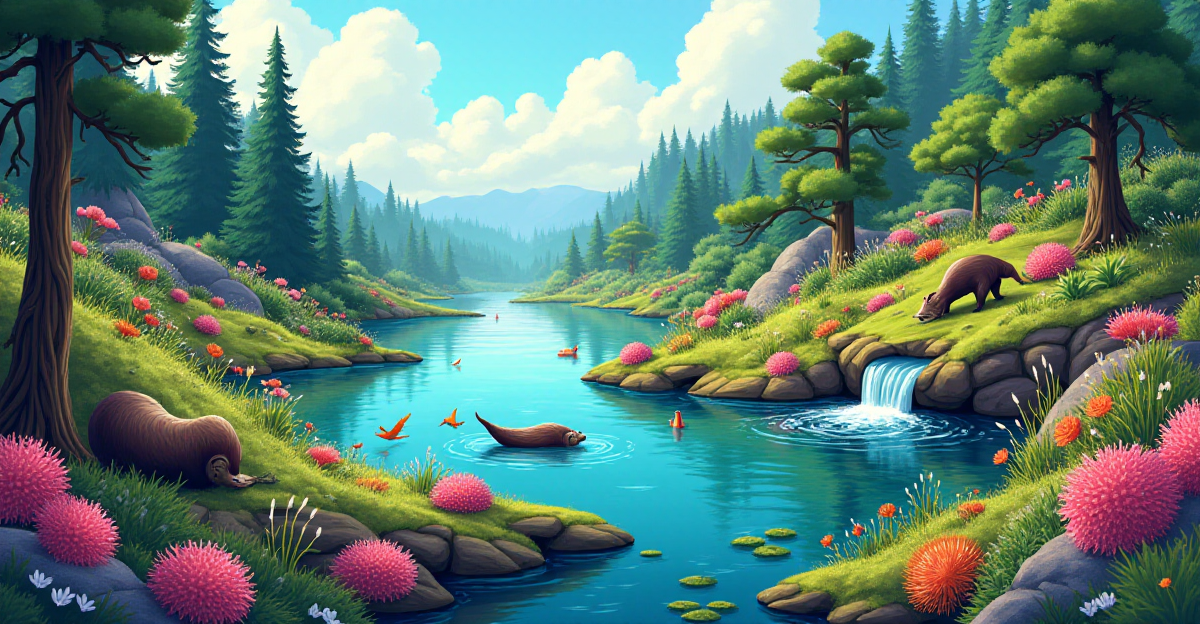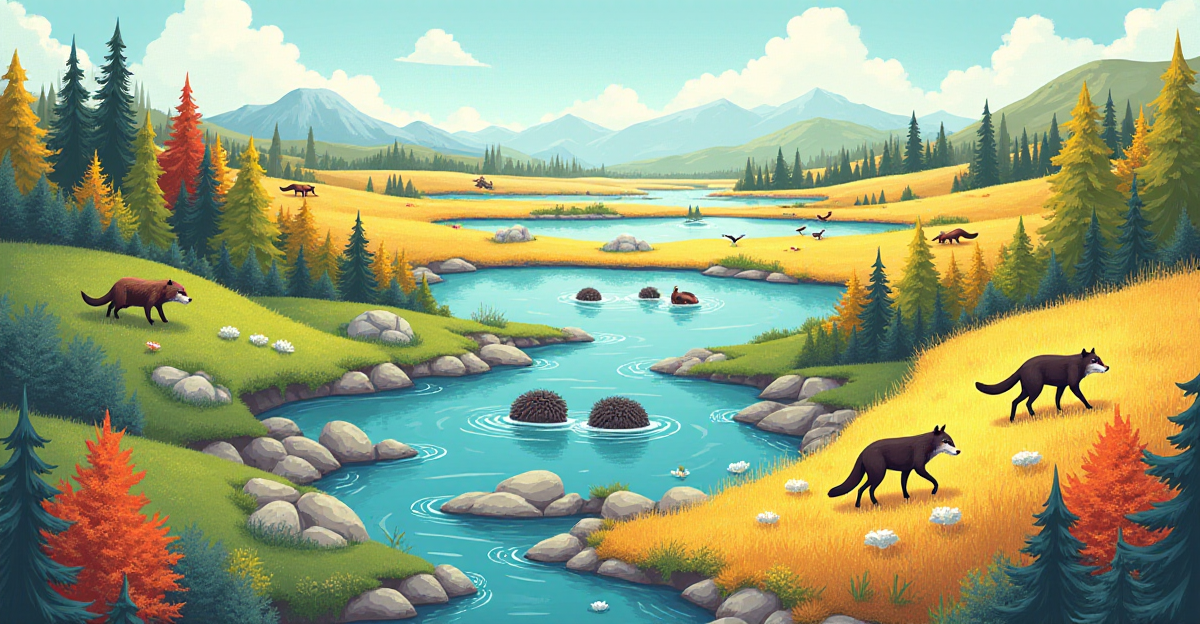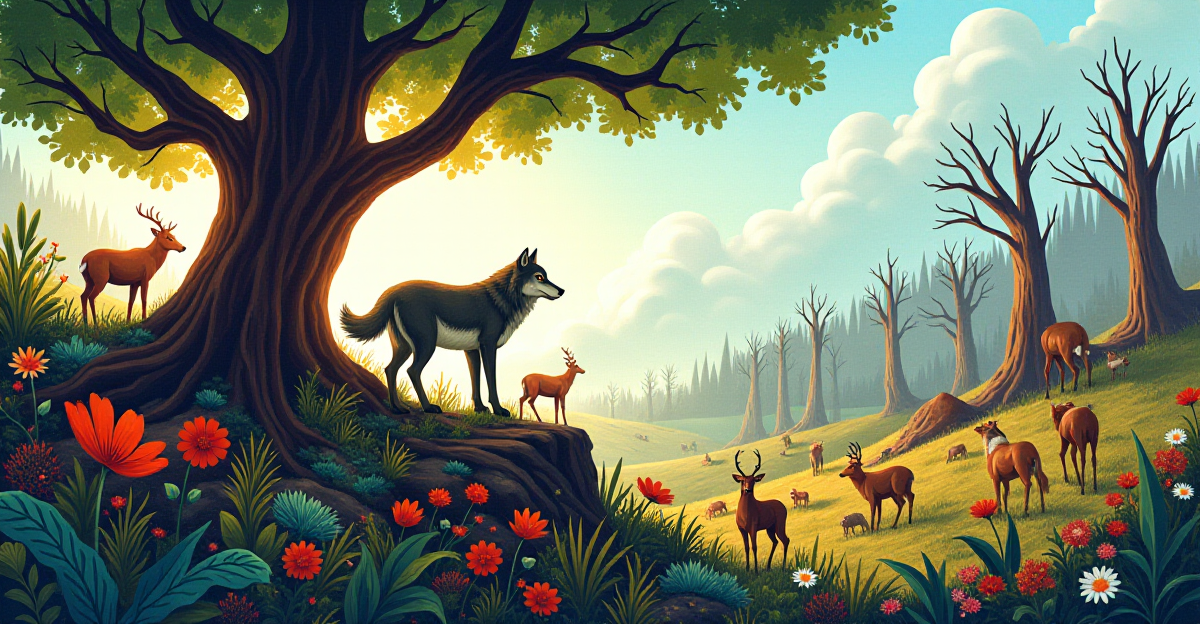Keystone species influence the survival of many other species by means of their disproportionate contribution to preserving the structure of their ecosystems. The definition of keystone species, instances from several ecosystems, and the reasons behind their conservation will be discussed in this paper. Based on first-hand knowledge of wildlife viewing, we will go over how safeguarding these species might guarantee the equilibrium of whole ecosystems.
Table of Contents
- What Are Keystone Species?
- Examples of Keystone Species in Nature
- Why Keystone Species Are Essential for Ecosystem Health
- Extra’s:
What Are Keystone Species?

Have you ever considered how a seemingly little organism may have a big influence on a whole ecosystem? It’s all about keystone species, the unsung environmental heroes. Consider them as the glue keeping an ecosystem intact and guaranteeing its diversity and balance. Although these species might not be the largest or most plentiful, their absence can have a terrible impact on the whole system.
The Importance of Keystone Species
Maintaining ecosystem balance depends on keystone species; they are the basis upon which whole ecosystems are constructed. Imagine a sophisticated metropolis with several roles for different people. The city runs thanks in great part to doctors, teachers, and sanitation workers. Keystone species are comparable in that their survival and well-being depend on other species within their ecosystem.
They might be herbivores like elephants on a savanna, carnivores like wolves in a forest, or even trees in a rainforest. They put out great effort to preserve the fragile equilibrium of their surroundings, therefore guaranteeing a suitable habitat for every kind of life.
Examples of Keystone Species
Let’s examine some amazing species more closely now. Wildlife conservation depends much on sea otters, those cute, energetic animals that eat sea urchins. The existence of these is absolutely vital for kelp forests’ vitality. Sea urchins would overgraze the kelp without them, therefore reducing biodiversity and setting off a chain reaction across the ecosystem. Imagine a vibrantly alive kelp forest. To remain in balance, this dynamic ecology depends on sea otters.
Hardworking rodents noted for creating dams are beavers. Value wetlands and habitats for a great range of species are produced by beaver dams. From frogs and fish to birds and animals, beavers build wetlands and habitats for many different kinds of species. They are really ecosystem engineers, changing the terrain and establishing a refuge for many kinds of species.
Gray wolf reintroduction to Yellowstone National Park is a striking illustration of how endangered species may completely transform a habitat. Wolf management of elk numbers let trees flourish and biodiversity to return. This amazing tale demonstrates how keystone species can allow nature to rebuild itself.
Why Protecting Keystone Species Matters
Maintaining keystone species affects their surroundings in turn. Saving a population of sea otters not only saves otters but also protects an entire kelp forest, an important habitat for a great variety of fish and other marine creatures.
Maintaining keystone species calls much more than just preservation of certain species. It is about maintaining the ecosystem balance and guaranteeing the welfare of every living entity. It is about preserving whole ecosystems and guaranteeing a good future for our earth.
Examples of Keystone Species in Nature

Ever heard of keystone species? The equilibrium of ecosystems depends much on these amazing animals. Though they look little or insignificant, their effect on the surroundings is great. Imagine a massive archway; the entire construction depends on the keystone at the top. Keystone species are those that guarantee the stability and health of their habitats in the natural world.
The surroundings of these vital species greatly affect them. Their activities affect the quantity and diversity of the species living in an ecosystem since they build habitats, control populations, and their effects extend through the system. Let’s look at some actual instances of these vital species and how their existence maintains the health of their surroundings.
Real-World Examples of Keystone Species
Sea Otters and Kelp Forests
One shining example of a keystone species are sea otters. Tiny, spiky marine life called sea urchins are their preferred feast. Unchecked, sea urchins can destroy kelp forests—underwater jungles offering habitat and food for many other species. By controlling the sea urchin count, sea otters help to preserve the equilibrium of the kelp forest environment. The species richness in these forests would decline and the kelp forest would finally vanish without sea otters. Unfortunately, sea otters were targets for hunters in the past because of their lovely, fluffy fur. Fortunately, conservation initiatives help their population to gradually recover.
Beavers and Wetlands
Amazing builders, beavers create wetlands and dams to change landscapes. Among the many species that call these dams home are frogs, fish, birds, and mammals. Creating homes, breeding places, food sources, and protection for numerous species, Beavers enhance the biological diversity of their surroundings. Amazing displays of these creatures’ building prowess, beaver dams provide a varied and sophisticated environment for many other species. Their teeth help them to chew down trees, which they then use to build their dams, therefore providing an important resource for other animals.
Wolves in Yellowstone National Park
An incredible illustration of how a keystone species may transform a whole ecosystem is the history of wolves in Yellowstone National Park. Being apex predators—that is, at the top of the food chain— wolves Once wolves were brought back to Yellowstone, they started managing the elk population, therefore preventing overgrazing and enabling the growth of once dormant trees. This demonstrated how crucial wolves are for preserving ecological stability, as the numbers of plant species, bird populations, and other animals grew.
The Importance of Conservation
These are only a handful of the several keystone species present all throughout the world. Though their jobs vary, their value is shared everywhere. It reminds us that every life is linked and that conservation depends on safeguarding these key species to guarantee a good future for our earth.
By supporting groups like the World Wildlife Fund or the Nature Conservancy, which are actively trying to preserve wildlife, you may significantly help to safeguard these vital species. Choosing sustainable seafood, utilizing reusable bags and water bottles or environmentally friendly cleaning products will help you also lessen your effect on wildlife. Little deeds add up to great difference. You can also inform yourself on the difficulties keystone species face and support their preservation in your local area. Working together, we can guarantee a bright future for our planet and assist to protect these essential lifeforms.
Why Keystone Species Are Essential for Ecosystem Health

Have you ever considered what maintains the variety of ecosystems found on Earth? Unassuming heroes of our natural world, a small group of creatures designated as keystone species may surprise you. Maintaining ecological balance and enabling a vivid biodiversity depend on these critical species. Like the keystone in an archway, without which the whole construction falls apart.
Consider a busy metropolis in which everyone depends on one another. Like the vital laborers keeping the city functioning, keystone species maintain its integrity. Though they are not often the most plentiful or biggest species, their behavior has a significant effect on their environment. Let’s investigate how these crucial species perform their magic and enter the amazing world they create.
The Importance of Keystone Species in the Ecosystem
Keystone species fall into several main groups:
Predators: Wolves are a classic example of a keystone predator in forests. They keep the populations of herbivores like deer in check. Imagine a forest overrun by deer. They could quickly eat all the vegetation, leaving behind a barren landscape. But wolves step in to regulate these populations, creating a natural balance. This allows for healthy plant growth and promotes biodiversity.
Herbivores: Elephants are a vital keystone herbivore in the African savanna. By clearing trees, they open up space for other species to thrive. They also encourage the growth of new plants and disperse seeds through their dung, further enriching biodiversity. Their role is vital for maintaining a healthy and diverse ecosystem.
Plants: Crucially keystone species in rainforests are trees. For a great range of wildlife, they offer food, cover, and nesting places. Naturally filtering the air and water, trees are vital in controlling the temperature and generating microclimates that allow a range of species.
Why We Should Protect Keystone Species
Conserving keystone species is about guaranteeing a healthy future for our world, not only about rescuing particular animals. It may surprise you to find how directly these animals affect human existence. Maintaining a strong and resilient environment depends on them absolutely.
Keystone species assist preserve biodiversity by regulating the numbers of other species. This generates a strong and healthy environment by preventing any one species from controlling the ecology.
Restoring Ecosystems: One of the best illustrations of how carefully preserving keystone species may help to heal degraded ecosystems is the return of wolves to Yellowstone National Park. Because the wolves managed the elk population, trees could flourish and a more varied and balanced ecology resulted.
Ensuring a Sustainable Future: Long-term sustainability of our earth depends on keystone species. By offering food for all, clean air, water, and a ecological balance, they work to preserve ecosystems.
We all have an obligation to safeguard these vital species. Knowing their critical role, we may make decisions that help them survive and forward a sustainable future. Supporting conservation projects, lessening your environmental effect, and raising knowledge of the significance of keystone species will all assist. For our planet and all of its occupants, a little action can have a great impact.
Extra’s:
For a deeper dive into the importance of preserving even the smallest organisms, you can explore our blog post on “The Science Behind DNA Ancestry Testing: What Your Genes Can Reveal Unseen Crisis: Protecting Our Endangered Microfauna.” This article explores the intricate web of life that exists within the microscopic world and how vital it is to maintaining ecosystem balance.
For a comprehensive overview of keystone species and their roles within ecosystems, be sure to check out this informative article titled “Keystone Species 101.” This resource delves into the concept of keystone species, their unique characteristics, and their vital contributions to biodiversity.












1 thought on “The Vital Role of Keystone Species: How One Species Can Shape an Ecosystem”